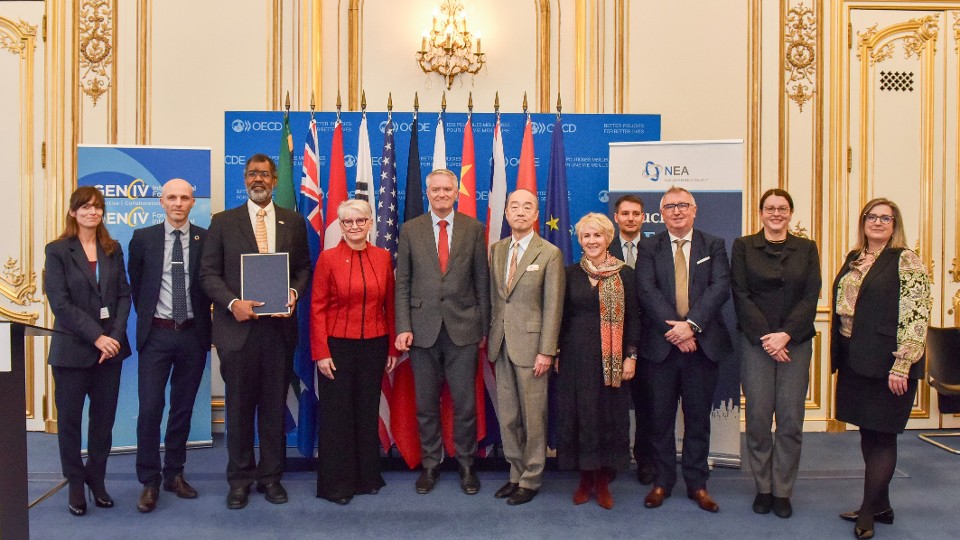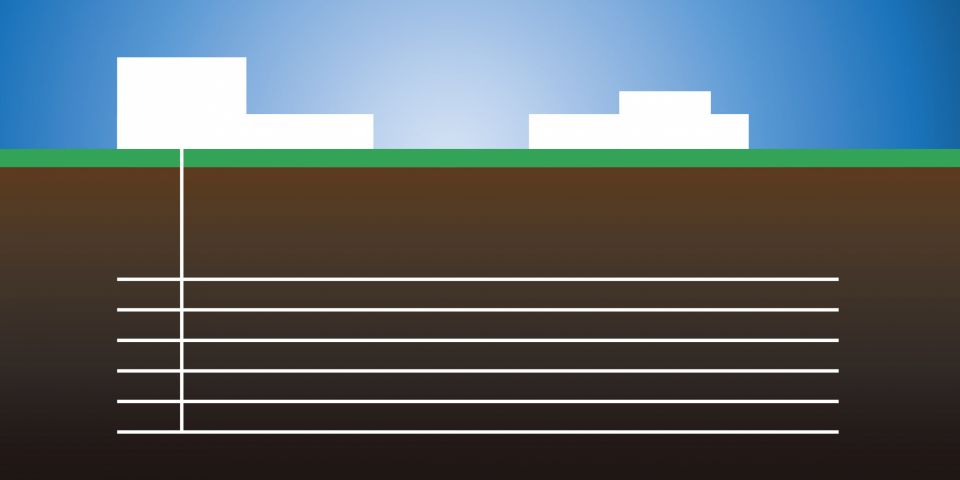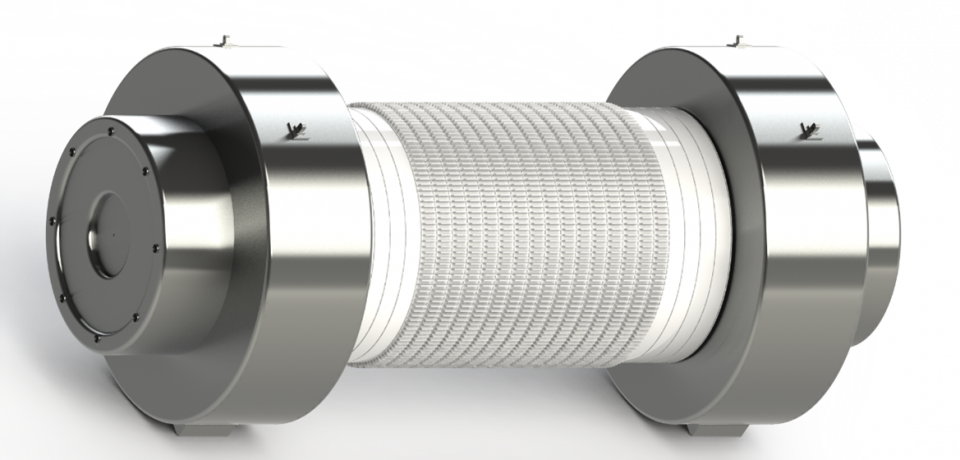Lego model of Swiss CROCUS reactor provides unique educational tool
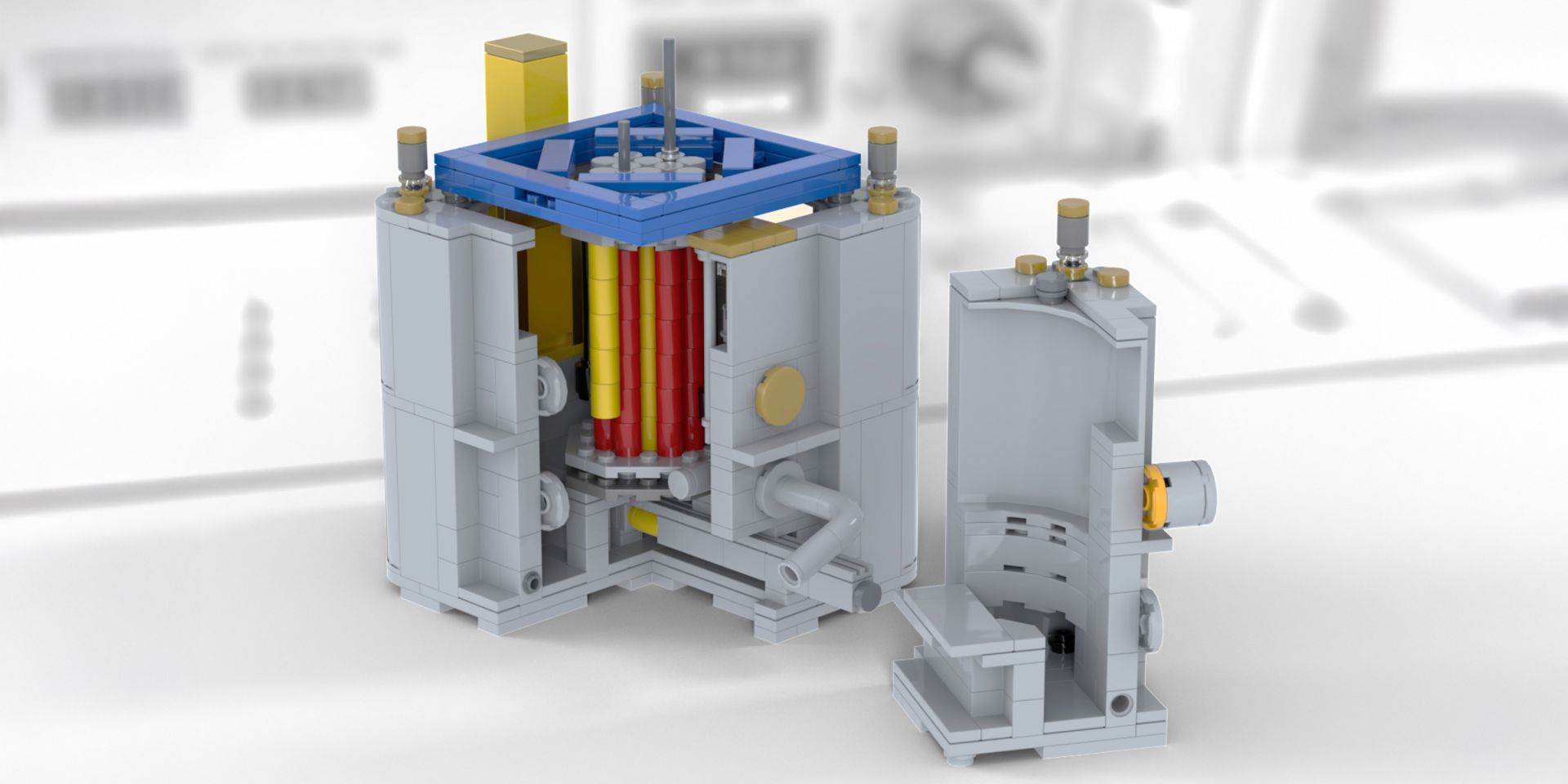
For many of us, the height of our accomplishments with Lego blocks might have been constructing little square houses as children. For others, these versatile building blocks are a medium for creating complex models of sophisticated machinery—models that have practical and educational applications. One such individual is ANS member Vincent Lamirand, a reactor physicist at the École Polytechnique Fédérale de Lausanne (EPFL) Laboratory for Reactor Physics and Systems Behavior (LRS) in Switzerland.

Lamirand
The French-born Lamirand, who holds a doctorate in nuclear physics from Joseph Fourier University in Grenoble, France, has designed a detailed and interactive Lego model of the CROCUS reactor. CROCUS is a zero-power uranium-fueled, water-moderated experimental reactor used for teaching and research at EPFL. Lamirand, who leads experimental research with CROCUS, uses this Lego model to teach physics and nuclear engineering students about reactor experiments and radiation detection.
Lamirand has long enjoyed Lego building sets. “From a childhood filled with iconic Lego Technic models, like the super car and space shuttle, to rediscovering the joy of building with my kids recently, Lego models have always been a source of creativity and learning for me,” he said. His hope is that the Denmark-based Lego Group will eventually produce his CROCUS reactor model as an official Lego set. To achieve this, the project must gather 10,000 supporters on the Lego Ideas website, a participative platform for community-driven designs. You can add your support for Lamirand’s model at ideas.lego.com/projects/e235fbd0-8ab8-4575-bd1c-37a25625f118.
He submitted the model in October 2024, and after a month it already had gained about 500 supporters, which Lamirand said at the time “is promising, considering the project’s unique scope.” By mid-January 2025, the project had garnered more than 800 supporters.
The CROCUS reactor
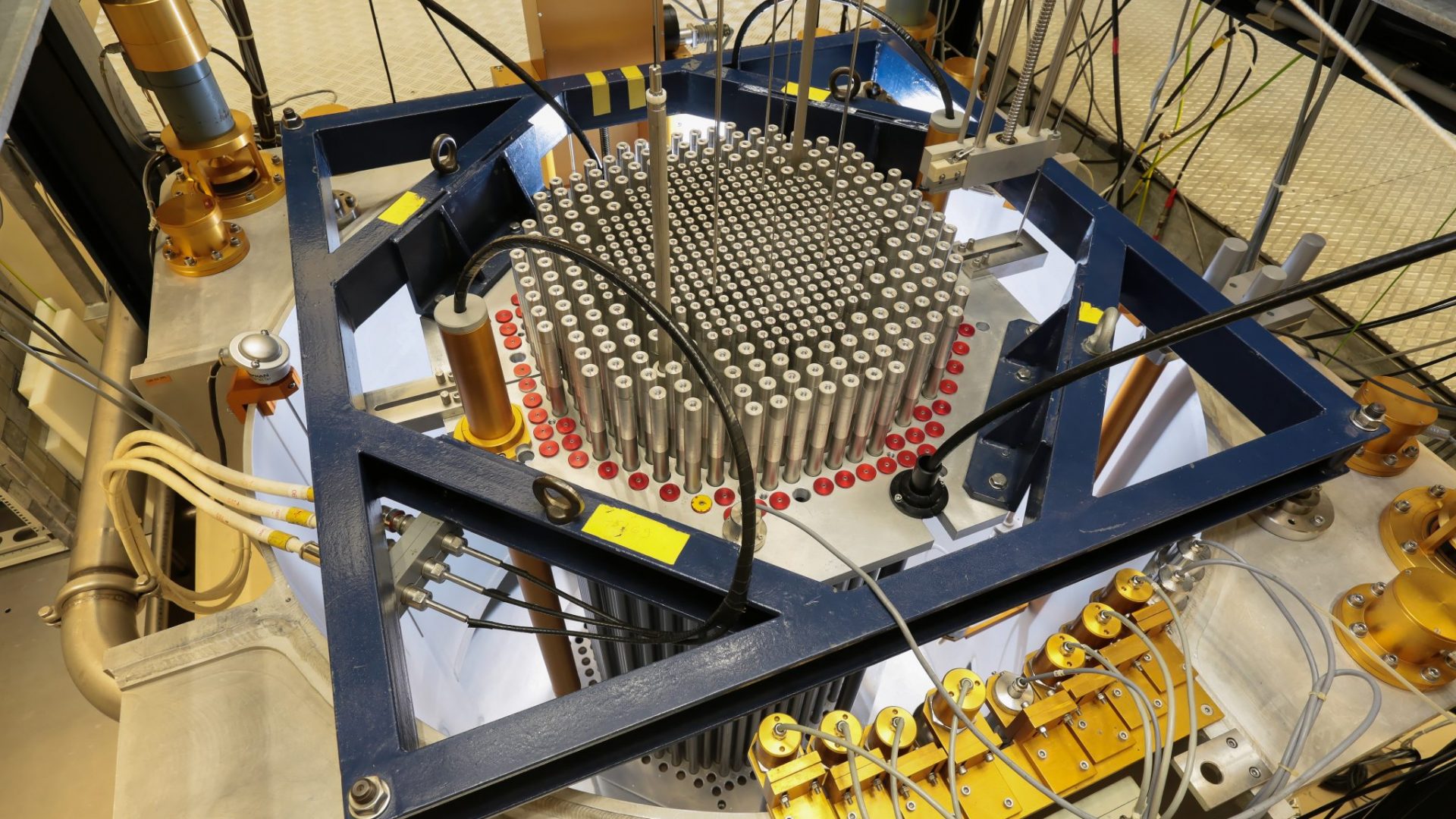
The real CROCUS reactor at the Laboratory for Reactor Physics and Systems Behavior in Switzerland. (Photo: EPFL)
To fully appreciate Lamirand’s Lego model, it helps to understand the laboratory in which CROCUS operates. LRS is part of EPFL, which is one of Switzerland’s two federal universities. The lab is also closely associated with the Paul Scherrer Institute (PSI), Switzerland’s largest research center for engineering and natural sciences—particularly PSI’s Center for Nuclear Engineering and Sciences (NES).
As a university laboratory, LRS encompasses both research and educational activities, including responsibility for the master’s program in nuclear engineering, which is run jointly with EPFL and Eidgenössische Technische Hochschule Zürich (ETHZ), Switzerland’s other federal university. In addition, LRS provides courses for undergraduate students in physics and mechanical engineering, as well as students from other universities and professionals.
The CROCUS reactor is a pivotal tool for teaching and research at LRS. Licensed by the Swiss Federal Nuclear Safety Inspectorate (ENSI), it operates at a maximum power of 100 watts. This very low power level is especially beneficial in education. Because the dose in the reactor cavity remains low, students can make several visits with only limited radiation-protection constraints.
According to Lamirand, CROCUS’s unique design permits a diverse range of experimentation, enabling both enhanced accuracy for reference experiments and improved flexibility for original developments. As such, CROCUS is included in the Nuclear Energy Agency’s International Handbook of Evaluated Reactor Physics Benchmark Experiments (IRPhE) database as a kinetics benchmark.
Ten seasons
“The research with CROCUS is distinguished by its breadth of experimental programs, which often blend experiments and instrumentation developments in unique ways,” Lamirand said. As detailed in his article “Ten Springs of Experiments in CROCUS,” which was published by EPJ Web of Conferences in November 2023, these programs represent 10 seasons’ worth of innovation and collaboration. “Around a decade ago [beginning in 2014], a new team rebuilt experimental research at EPFL’s nuclear facilities, and in particular in the CROCUS nuclear reactor. After a broad investigation and open discussions with colleagues from the nuclear community, a number of experiments and research directions were selected. They range from reactor physics to nuclear data, with a focus on instrumentation,” Lamirand wrote.
The PETALE program, for example, is being conducted in collaboration with the French Alternative Energies and Atomic Energy Commission (CEA). PETALE provides insights into nuclear data regarding the use of stainless steel for neutron transport in heavy reflectors and reactor vessels. Lamirand said, “Incidentally, the Department of Energy/Nuclear Regulatory Commission–funded Collaboration for Criticality Safety Support for Commercial-Scale HALEU for Fuel Cycles and Transportation recently supported data from PETALE as a benchmark in its ICSBEP [International Criticality Safety Benchmark Evaluation Project], in collaboration with the University of California–Berkeley and Lawrence Livermore National Laboratory.”
Another CROCUS experiment is the ongoing BLOOM program, which is refining pile-oscillation techniques to measure the reactivity worth of stainless steel elements. Lamirand explained that the principle of pile-oscillation techniques “involves repeatedly inserting and removing a sample in the reactor core—essentially oscillating it—to measure its impact. By employing a different methodology, BLOOM extends PETALE to identify biases and reduce uncertainties, while also exploring materials beyond base steel elements, such as dopants.”
This program relies on the SAFFRON detector array, a novel system developed at LRS that consists of 160 miniature neutron detectors distributed in the core of CROCUS.
Building on these advances, efforts in activation dosimetry have expanded through a CROCUS program called NECTAR, which, according to Lamirand, “leverages an instrumented fuel rod to obtain detailed intra-pin neutron flux distribution data. NECTAR complements the high-resolution capabilities of SAFFRON, enhancing spatial studies critical for benchmarking and reactor physics research.”
SAFFRON is also central to CROCUS’s upcoming HONEY program, which Lamirand said “will conduct 3D and time-resolved experiments with unprecedented spatial resolution for the validation of dynamic Monte Carlo codes. Initial experiments will focus on kinetics (e.g., rod jump experiments) with detailed spatial mapping, followed by investigations into neutron clustering.”
Similarly, SAFFRON will be instrumental in the continuation of the COLIBRI program, which focuses on fuel vibration studies using an in-core device capable of oscillating up to 18 fuel rods laterally (i.e., within their lattice). These coming experiments will incorporate enhanced spatial data that have been enabled by SAFFRON, Lamirand said.
The CROCUS experimental team’s ambitions also include neutron imaging and the development of miniature high-flux and fast neutron detectors. The team is obviously committed to tackling challenging and innovative projects.
Creativity and teamwork
Students from the Joint EPFL-ETHZ master’s program in nuclear engineering using the Lego model of the CROCUS reactor in class. (Photo: Vincent Lamirand)
Before joining EPFL and the CROCUS team, Lamirand started his educational journey in his homeland of France. Originally from Lyon, he said, “I have always been interested in sciences. Aside from the exact field, I am basically doing what I said I wanted to do to my parents when I was five years old!”
He earned his master’s degree in fundamental physics at Claude Bernard University in Lyon before completing his Ph.D. in nuclear physics at the AMANDE facility, part of France’s Institute for Radiation Protection and Nuclear Safety (IRSN). Afterward, he completed a postdoctoral fellowship with CEA experimental reactors EOLE and MINERVE. Lamirand said that those facilities “played key roles in validating nuclear data and neutronic calculation tools before the reactors’ recent decommissioning.”
In 2014, Lamirand joined EPFL to relaunch the LRS experimental research. He subsequently gained a double affiliation with PSI, where he earned his tenure in 2020. “Our primary mission at LRS is education,” Lamirand said. “CROCUS serves not only our bachelor’s and master’s students but also students from other institutions and professionals in the field.” In his reactor experiments course, students have the opportunity to perform such reactor work as control rod calibration, approach to critical, and neutron noise. He also created a radiation course in 2017 to complement the curriculum of the EPFL-ETHZ joint program in nuclear engineering, which he has helped to restructure and manage at EPFL.
As leader of experimental research with CROCUS, Lamirand is in charge of designing and building experimental programs. He has also recently been busy codirecting six doctoral theses and about 10 master’s theses. Beyond these specialties and duties, Lamirand has served as deputy head of the LRS nuclear facilities, supporting the management of the LRS controlled area. In addition, he is involved in the academic representation assemblies of EPFL.
Lamirand describes himself as an experimentalist with expertise ranging from reactor physics and nuclear physics to instrumentation and measurements, Monte Carlo methods, and data analysis. He considers himself to be a “catalyst” within his team at LRS. “In a small academic setting like ours, creativity and cross-feed between education and research and between fields and topics are essential,” he said. He emphasizes the importance of “persistence and adaptability, as this work demands not only technical expertise but also a long-term vision that balances day-to-day operations with strategic goals.”
Education and outreach
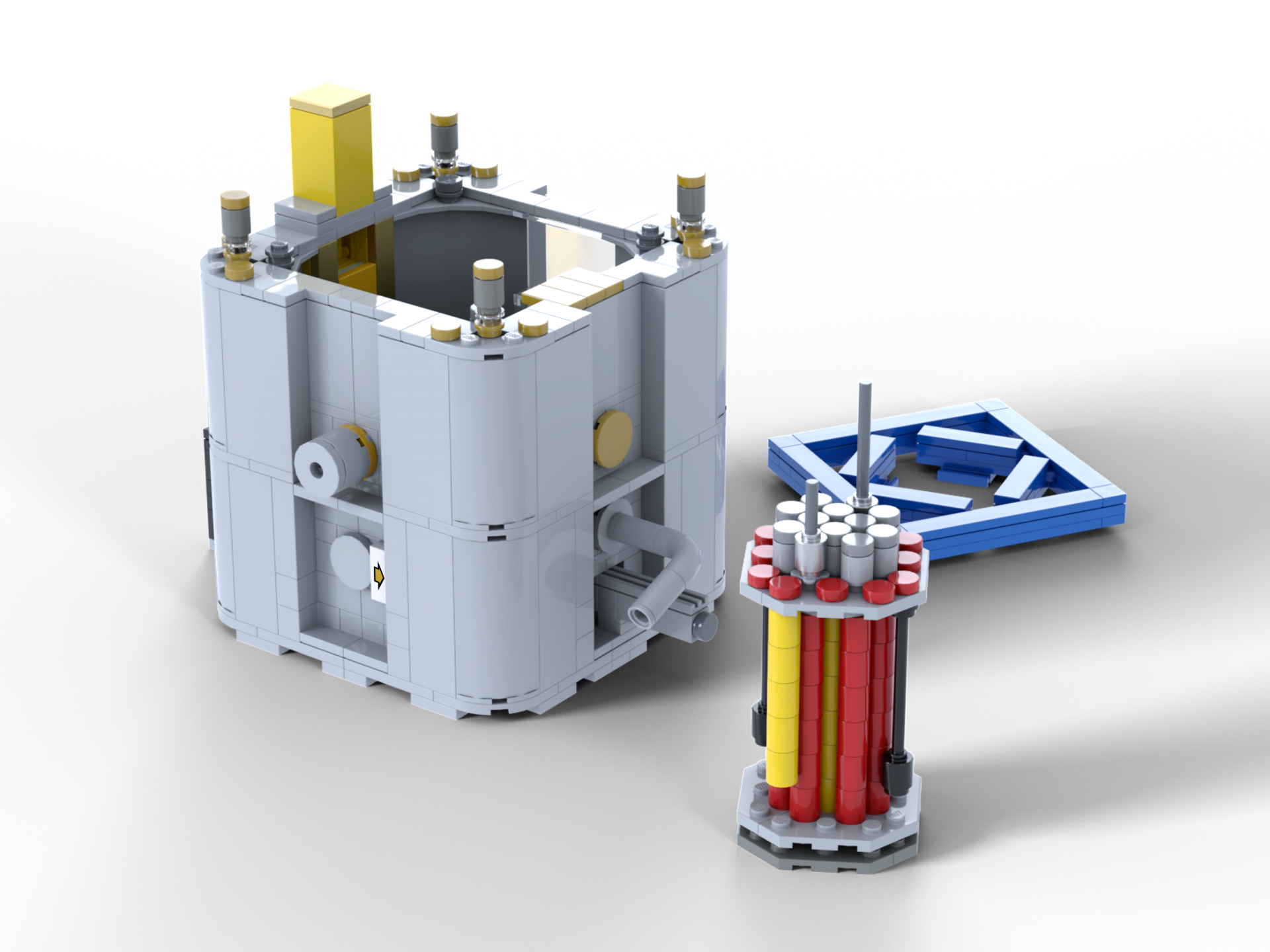
CROCUS Lego model with the core unloaded from the vessel. (Image: Vincent Lamirand)
A close look at Lamirand’s Lego CROCUS reveals an amazing match with the real reactor. The Lego model is a scaled-down but highly detailed replica built from approximately 650 bricks. Using Lego’s official Studio design software, Lamirand meticulously designed the model to include all of the reactor’s essential components, including the reactor vessel, core with fuel rods, absorber rods, spillway, monitors, startup source, expansion vases, and water systems. He then ordered the Lego bricks from a community exchange platform to build a physical model.
Lamirand noted that he had to develop two versions of the model before he was satisfied with it. “The first version looked good but was not sturdy enough, so I refined it a bit to enhance that aspect.”
When asked how he came up with the idea, Lamirand explained, “My kids, who are ages seven and five, rekindled my passion for Lego. When I discovered Lego’s design software, creating a model of our reactor was the first idea that came to my mind. . . . In my courses, I had noticed how challenging it was for students to visualize the complex internal systems of a reactor.” He says that his teaching experience highlighted the limitations of a 3D-printed model that he and a student had previously developed. That model, while visually accurate, remained fragile and unsuitable for active handling. “The Lego version fills the need for a durable, interactive educational tool.”
In his work, Lamirand has collaborated with Elisa Cattaruzza, an educational researcher at Université de Neuchâtel in Switzerland, to analyze classroom interactions with the Lego model through an interdisciplinary approach. “The model is highly interactive, it is built to be sturdy, and all parts are easily accessible, allowing you to explore its features in-depth,” he explained. “It helps students visualize by manipulating parts. For example, they can unload the core to examine the core and vessel internals, move the water spillway and absorber rods, and use the viewing window and openable vessel for better observation.”
Lamirand said that he is currently “in the testing phase, conducting a study on its impact in class. The model is very effective in showing and explaining aspects that students might miss even after an extensive visit to the real reactor and practical experiments. It serves as a complementary tool to engage the students in a discussion of the reactor concepts, systems operation, and experiments.”
A study of the Lego reactor’s impact on learning has been submitted for presentation at the Advancements in Nuclear Instrumentation Measurement Methods and their Applications conference (ANIMMA 2025), to be held in early June in Valencia, Spain. According to Lamirand, “Preliminary results suggest that the model fosters deeper engagement and conceptual understanding.”
“The accessibility and universal appeal of Lego make this model an ideal candidate for outreach activities beyond the classroom,” Lamirand said. He envisions its use in public science events or even in interactive workshops designed to introduce the fundamentals of nuclear science to diverse audiences. “The beauty of this model is that it speaks a language everyone understands. Whether you’re a child fascinated by how things work or an adult curious about nuclear energy, this tool can break down barriers and foster curiosity.”
Beyond organized events, the potential commercialization of the model CROCUS as a Lego set could bring nuclear science directly into homes, classrooms, and informal learning environments worldwide. Owing to Lego’s global popularity, the model has “the unique ability to make nuclear science approachable to an exceptionally broad audience—spanning different age groups, professions, and levels of familiarity with science,” observed Lamirand. “By leveraging the playful yet educational nature of Lego, the model has the potential to demystify nuclear science, inspire future scientists, and spark meaningful discussions about the role of nuclear energy in addressing global challenges.”
Vision for the future
Lamirand is clearly a creative and original thinker. He is also a nuclear scientist who holds values that are very important to him. When asked about his career goals, he said, “For me, ‘career goals’ is a surprising expression. I focus on people and purpose. My main objective is to contribute to our community by educating students—in the broad sense—and contributing meaningfully to the nuclear field. I enjoy developing new ideas and seeing them through with people to help motivate them.” He emphasizes the alignment of the nuclear field with ecological and societal values.
For Lamirand, projects like the Lego CROCUS are not just about education but are also about inspiring the next generation of nuclear professionals. “By making nuclear science tangible and engaging, we can motivate students to explore this field and contribute meaningfully to society.” Should Lego not commercialize the model, Lamirand plans to release it himself as a Lego “MOC” (my own creation), with instructions and a parts list available on an online community platform, thereby ensuring that anyone who is interested can build their own model CROCUS.
Whether as a teaching tool or a source of inspiration, Lamirand’s Lego reactor demonstrates how creativity and science can intersect to make complex topics more approachable. As the project continues to gain momentum, it serves as a testament to how simple ideas, like assembling a model from Lego, can have a profound impact on the education of students and the public understanding of nuclear science. Imagine the motivation and values that the CROCUS Lego model could help inspire should it be commercialized.


